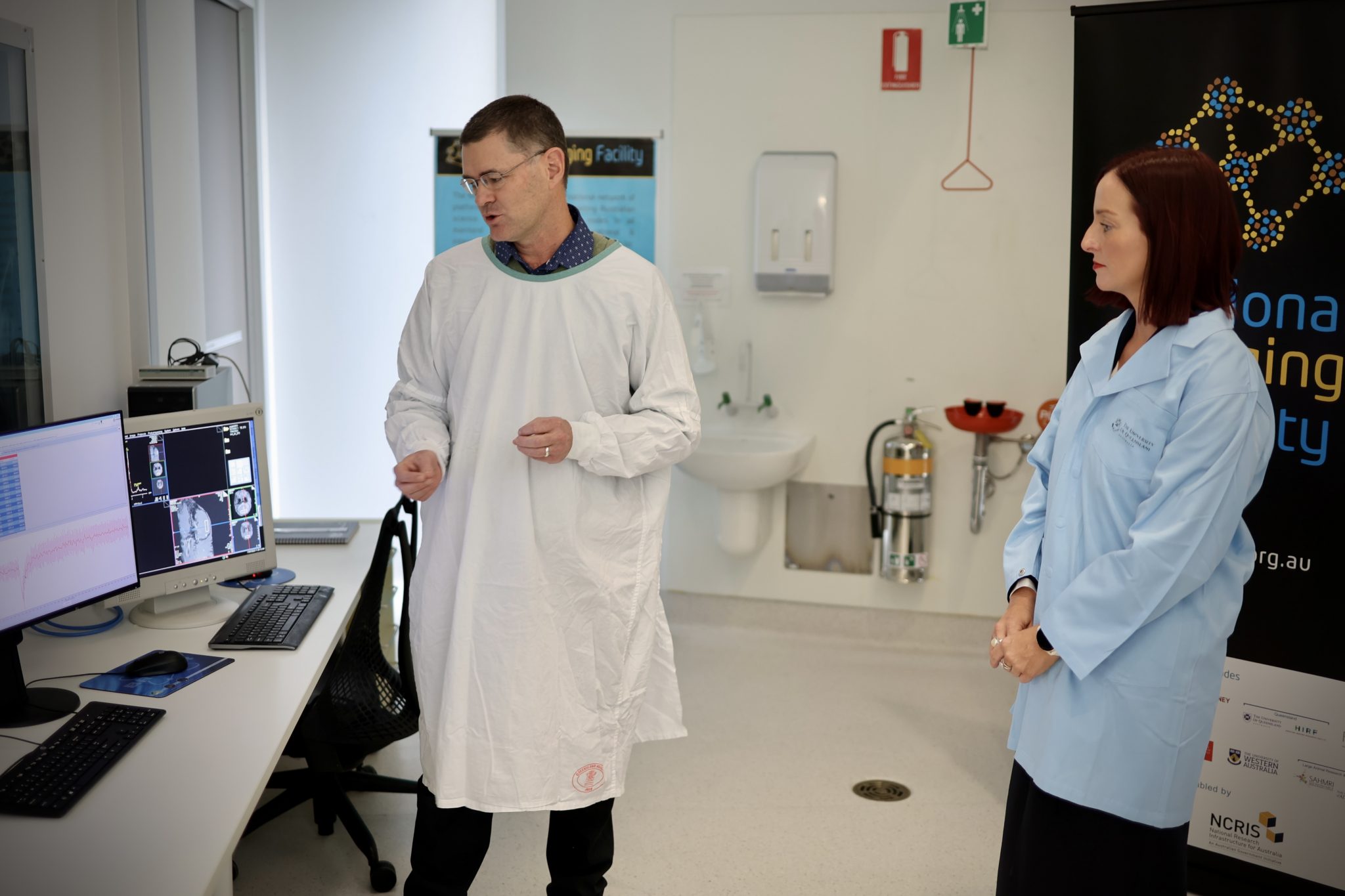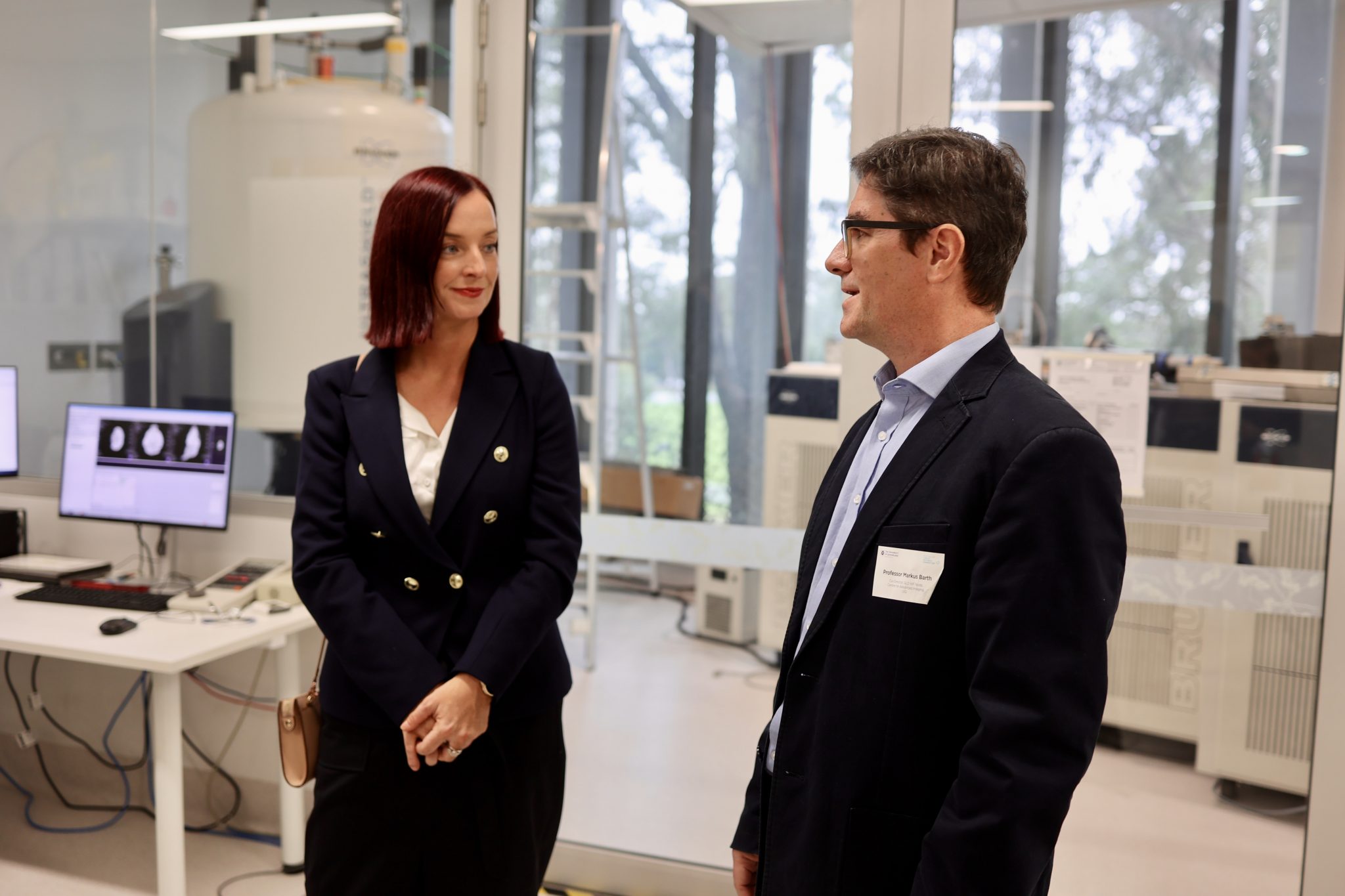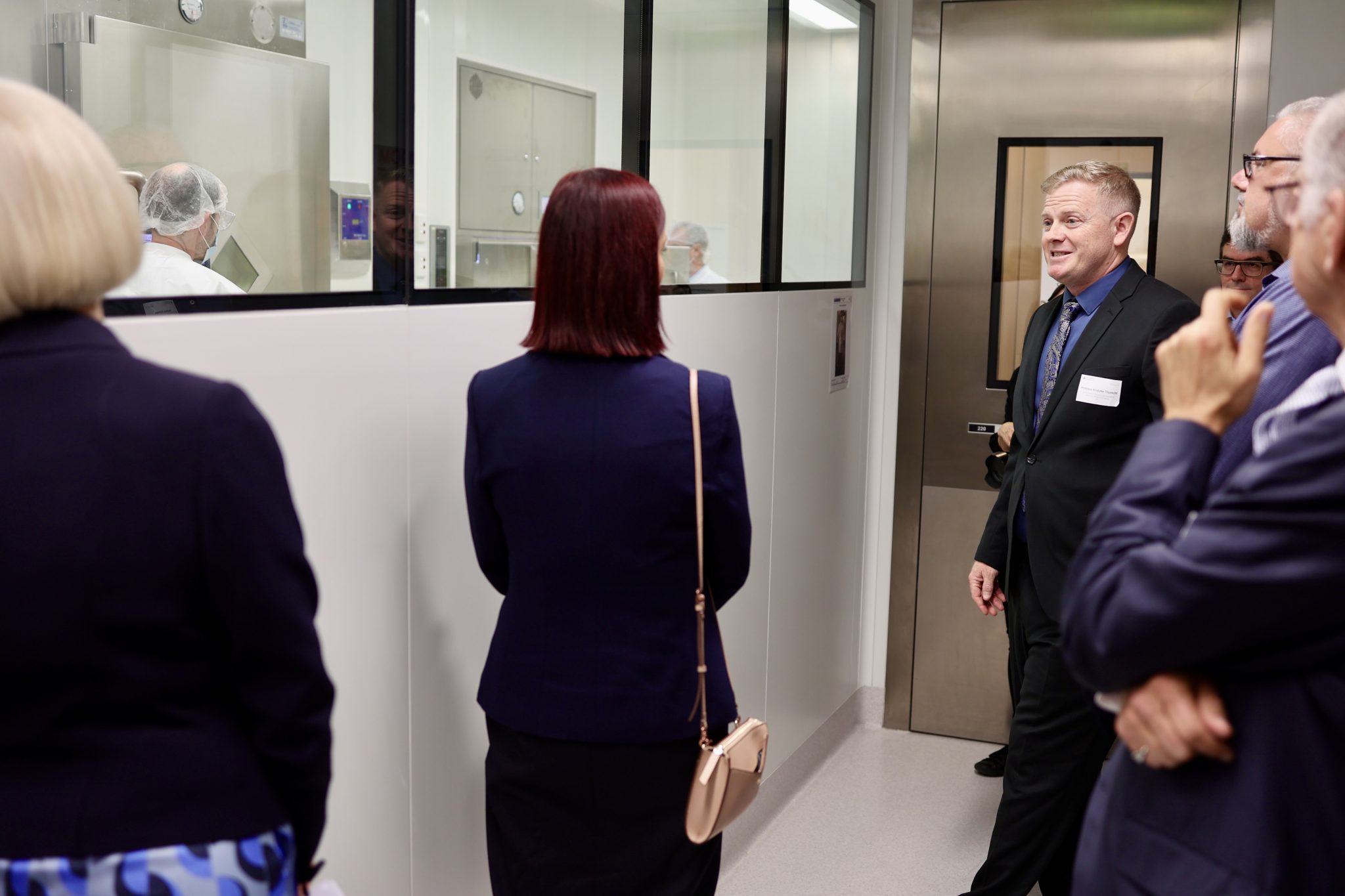Queensland’s Assistant Minister for Health and Regional Health Infrastructure, the Hon Brittany Lauga MP joined the University of Queensland’s Vice-Chancellor and President Prof Deborah Terry AO and Chair of the Australian Cancer Research Foundation (ACRF), Mr Tom Dery AO to officially open the ACRF Facility for Targeted Radiometals in Cancer (AFTRiC) at the Centre for Advanced Imaging (CAI) in Brisbane today.

AFTRiC will be Australia’s first facility for the discovery, development and clinical application of novel alpha particle-based cancer therapeutics, as well as other radiometal and molecular imaging agents.
The Facility has been co-funded by the National Imaging Facility (NIF) ($1.2m) in partnership with the ACRF ($1.2m), the Ian Potter Foundation ($180k) and the University of Queensland.

AFTRiC will support the advancement of cancer theranostics (combined therapy and diagnostics in imaging), using cancer-seeking molecules attached to alpha particles to deposit high-energy radiation to cancer cells, without impacting healthy tissue.
NIF Chief Executive Officer, Prof Wojtek Goscinski said it was a privilege to partner with the University of Queensland, the ACRF and the Ian Potter Foundation to boost Australia’s open-access alpha particle research capabilities.
“Our investment in AFTRiC aligns with NIF’s commitment to grow our capability to help researchers and industry use alpha particles to produce and test new-generation theranostics,” Prof Goscinski said.
“The development of new theranostics through AFTRiC will support this fast-growing area of significant healthcare innovation, allowing doctors to ‘see what they treat’ by combining diagnosis and treatment to improve cancer therapy and outcomes.”
CAI Deputy Director (Research) Prof Kris Thurecht said several pieces of AFTRiC equipment had already been installed at CAI and used to evaluate first-in-class radiopharmaceuticals, building a strong case for the development and clinical translation of new cancer drugs.
“Radiopharmaceuticals and theranostics have been identified by all levels of government as a next-generation research priority, and AFTRiC firmly positions us as one of the country’s leading capabilities in this space,” Prof Thurecht said.

“We will be one of the few places in the country that can produce these specialised radiopharmaceuticals and, in collaboration with our industry partners, we will evaluate and hopefully develop clinical grade product for clinical trials.”
AFTRiC is one of two NIF investments underpinning a national capability for targeted alpha particle therapeutics. The other is establishing a new facility at ANSTO’s Lucas Heights campus to enable the development and translation of alpha-emitting radiopharmaceuticals, having access to radioisotopes produced in the OPAL research reactor.